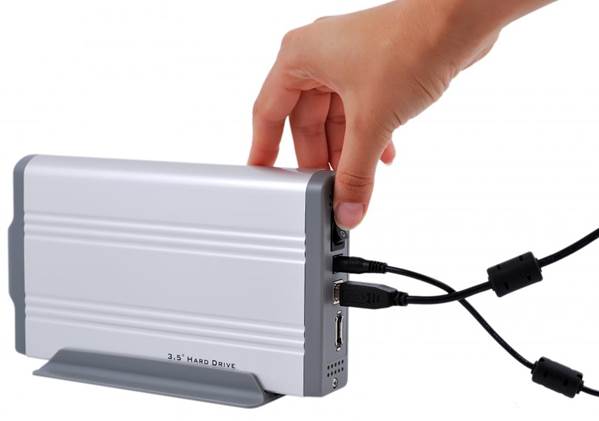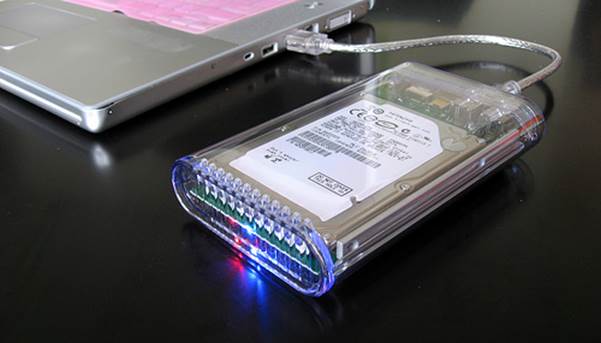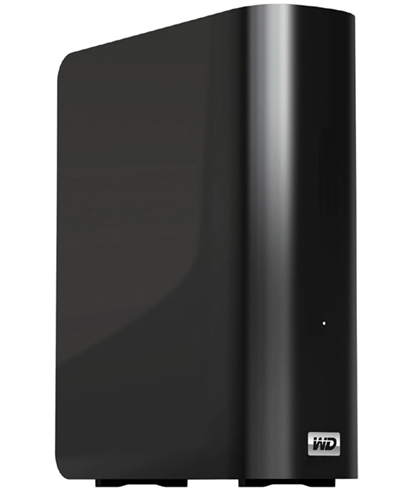In this week’s guide, we help you select the
right external hard drive
Something odd is happening to computer
storage. After years of growing and growing, it’s suddenly started to shrink,
and this at a time when high-definition media requires more space than ever,
and games are being shipped on multiple DVDs to accommodate the most amazing
visuals.
The reason for this apparent shift in
manufacturer attitudes is the rise of portable computing and solid-state
technology, both of which make putting less and less storage space in a device
acceptable, both financially and practically speaking. So in a world where your
new computer seems to have less space than your old one, what’s the best
alternative?

How
To Choose An External Drive?
The answer, of course, is an external hard
drive. By storing data on such a stand-alone device, you don’t just make it
possible to keep huge amounts of data accessible from almost any compatible
machine; you provide a safe place to make backups of important documents, and
an easy way to transport colossal amounts of data from one place to another.
It’s fair to say that while external hard
drives may not be able to replace internal storage completely, they’re becoming
increasingly useful in a world where most households have multiple computing
devices, many of which measure their storage in gigabytes, rather than
terabytes. If you’re thinking of buying one to take advantage of the
portability and space, we have the information you need right here.
How Much Should You Spend?
As with all hard drives, the cost of an
external hard drive unit is closely related to its capacity. You can pick up
500GB models for around $80, which may seem cheap, but remember that these are
at the absolute bottom of most current ranges. It’s tough for manufacturers to
make external hard drives any cheaper than $80, which means that what you get
is relatively expensive for its features and capacity.
To check, do a quick calculation: divide
the capacity by the price, and you’ll see that most 500GB hard drives get you
around 10GB per pound. Whack that up to 2TB (2000GB) and each pound buys you
closer to 20GB, sometimes considerably more.

You
can pick up 500GB models for around $80, which may seem cheap, but remember
that these are at the absolute bottom of most current ranges.
The best price for a standard, no frills
external hard drive can be found around the $160 mark. This amount can buy you
a 2TB drive, which should be enough for backing up all but the largest
quantities of files (even the best retail computers don’t tend to come with
more than 1TB at the moment).
If you have multiple machines or want extra
features, you can pay more, and the high-end models that are aimed at a
consumer market are found around the $240 mark. Once you get beyond that,
you’ll find specialist features and hardware, and the largest, most expensive
external storage units have a capacity of 6TB to 8TB and are priced above $800.
These tend to be poor value, though. A quick calculation shows that a $800 6TB
drive offers only 12GB per $1.6 spent, meaning they’re not just objectively
expensive, but relatively expensive too!
Unless you have specific needs that require
you to spend more than the average, we’d recommend budgeting between $128 and
$208 for a good external hard drive. For that amount of money you can expect to
get a reasonably high capacity, as well transfer speeds comparable to an
internal hard drive, and features to help secure and safeguard your data.
Spending more isn’t advisable (unless you want features like RAID) but you can
spend a bit less without having to worry if you’re more concerned with the
actual price than value for money.
What Make/Model/Manufacturer Should You Look For?
As with internal hard drives, there are
many manufacturers to choose from - even more, in fact, than make internal
models. The differences between various models of external drives tends to be
less about the technology inside the hard drive itself, and more about the
software and interface that runs them That said, it’s important to get a
high-quality hard drive, particularly if you’re using the unit as a backup
provider or the sole storage for media. The last thing you want is for a
storage unit you rely on to fail. Warranties are helpful in replacing hardware,
but they can’t bring back lost data.

As
you might expect, the best quality external drives are made by the same
companies that make the best quality internal drives: Seagate and Western
Digital
As you might expect, the best quality external
drives are made by the same companies that make the best quality internal
drives: Seagate and Western Digital. That said, there are other companies that
make drives worth paying for. Buffalo’s line of external hard drives is
extensive and fairly priced, covering everything from entry-level consumer
goods to enterprise-level external RAID units.
Buffalo’s line primarily consists of two
brands:
MiniStation units and DriveStation units.
The former are aimed at individuals who perhaps want to back up just the one
PC, meaning they’re smaller (in both size and capacity) than the DriveStations,
and powered by nothing more than a USB cable. The DriveStations, by comparison,
are large and require their own power supply, making them suitable for more
complicated setups.
Western Digital has a similar division in
its products, between the ‘My Book’ products and the ‘My Passport’ ones. The
main difference between the two is that My Book drives need external power,
because they contain a 3.5” hard drive, whereas My Passport drives are designed
to be portable and are powered by USB. The choice between the two relies on
whether you plan to carry the drives around or want to use them as network
storage, but neither is any less reliable or robust than the other.
The important thing to remember about
external hard drives is that no matter what brand you buy, it will fail
eventually. Most persist for years without error, some will experience a freak
crash the second their warranty expires, and others might die two weeks after
you buy them. This is unavoidable, so don’t believe any manufacturer who claims
superiority in that regard.